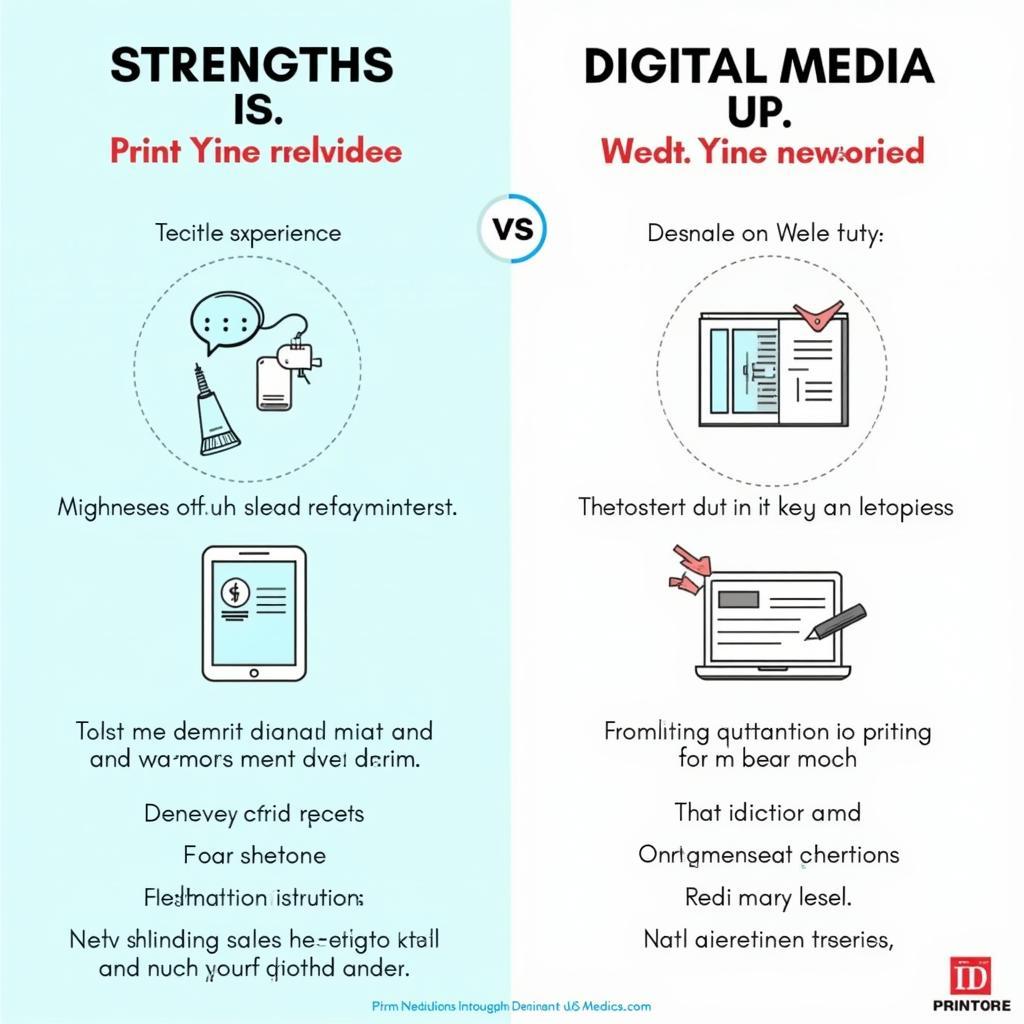Passage 1 – Easy Text
The digital revolution has transformed many aspects of our lives, including how we consume information. This shift has led to significant changes in the print media industry, with traditional newspapers and magazines facing unprecedented challenges. As more people turn to online sources for news and entertainment, print publications have seen declining readership and advertising revenue.
However, despite these challenges, print media is not disappearing entirely. Many publications are adapting to the digital age by developing online platforms and hybrid models that combine print and digital content. Some niche magazines and high-quality publications have even seen growth in recent years, catering to specific audiences who value the tactile experience of reading physical copies.
The future of print media in the digital age is likely to involve a symbiotic relationship between print and digital formats. While digital platforms offer immediacy and interactivity, print media can provide a more immersive and focused reading experience. This complementary approach may help ensure the survival and evolution of print media in an increasingly digital world.
 Print and digital media coexisting in the modern world
Print and digital media coexisting in the modern world
Questions 1-5
Do the following statements agree with the information given in the passage? Write
TRUE if the statement agrees with the information
FALSE if the statement contradicts the information
NOT GIVEN if there is no information on this
- The digital revolution has had no impact on the print media industry.
- Some niche magazines have experienced growth in recent years.
- All print publications are struggling to survive in the digital age.
- Digital platforms offer more interactivity than print media.
- Print media provides a more focused reading experience than digital formats.
Questions 6-10
Complete the sentences below. Choose NO MORE THAN TWO WORDS from the passage for each answer.
- The print media industry is facing __ challenges due to the digital revolution.
- Print publications have experienced a decline in __ and advertising revenue.
- Some publications are developing __ that combine print and digital content.
- The future of print media may involve a __ relationship with digital formats.
- Print media can offer a more __ reading experience compared to digital platforms.
Passage 2 – Medium Text
The future of print media in the digital age is a topic of considerable debate among industry experts and media consumers alike. While some predict the imminent demise of traditional print formats, others argue that print media will continue to play a significant role in the information landscape, albeit in a transformed state.
One of the key challenges facing print media is the shift in advertising revenue to digital platforms. Online advertising offers more targeted and measurable campaigns, which has led many advertisers to redirect their budgets away from print publications. This financial pressure has forced many newspapers and magazines to reduce staff, cut back on content, or cease operations entirely.
However, print media also possesses unique strengths that digital formats struggle to replicate. The tactile experience of reading a physical book or magazine, the absence of distractions inherent in digital devices, and the perceived credibility of print publications are all factors that continue to attract readers. Moreover, some studies suggest that information retention is higher when reading from print compared to digital screens.
 Comparing strengths of print and digital media formats
Comparing strengths of print and digital media formats
Innovation in the print industry has led to the development of new business models and content strategies. Many publications now offer hybrid subscriptions that provide access to both print and digital content, catering to readers who value both formats. Additionally, some magazines have repositioned themselves as premium products, focusing on high-quality content and design to justify higher price points and attract niche audiences.
The environmental impact of print media is another factor influencing its future. While the production and distribution of physical publications have traditionally been resource-intensive, advancements in sustainable printing practices and materials are helping to mitigate these concerns. Some argue that the energy consumption and electronic waste associated with digital devices may actually make print a more environmentally friendly option in certain contexts.
As we look to the future, it seems likely that print media will continue to evolve and adapt to the changing media landscape. While it may no longer dominate as it once did, print media is likely to find its place alongside digital formats, each serving different needs and preferences of diverse audiences.
Questions 11-14
Choose the correct letter, A, B, C, or D.
-
According to the passage, what is one of the main challenges facing print media?
A) Decreasing quality of content
B) Lack of innovation in the industry
C) Shift in advertising revenue to digital platforms
D) Reduced readership among younger generations -
Which of the following is NOT mentioned as a strength of print media?
A) Tactile reading experience
B) Fewer distractions while reading
C) Higher information retention
D) Faster access to breaking news -
How are some publications adapting to the changing media landscape?
A) By focusing exclusively on digital content
B) By offering hybrid subscriptions
C) By reducing the quality of their print editions
D) By increasing advertising rates -
What does the passage suggest about the environmental impact of print media?
A) It is always worse than digital media
B) It has not changed over time
C) Sustainable practices are helping to mitigate concerns
D) It is no longer a consideration for consumers
Questions 15-20
Complete the summary below. Choose NO MORE THAN TWO WORDS from the passage for each answer.
The future of print media in the digital age is a subject of (15) __ among experts and consumers. While print media faces challenges, such as the loss of (16) __ to digital platforms, it also has unique strengths. These include the (17) __ of reading physical publications and the perceived (18) __ of print media. Some publications are adapting by offering (19) __ that combine print and digital access. Despite concerns about its environmental impact, advancements in (20) __ are helping to address these issues.
Passage 3 – Hard Text
The trajectory of print media in the digital age is a complex and multifaceted issue that defies simplistic predictions. While the rise of digital platforms has undeniably disrupted traditional print models, the relationship between print and digital media is evolving into a nuanced ecosystem rather than a zero-sum game.
The proliferation of digital content has led to an oversaturated information landscape, where the sheer volume of available material can be overwhelming for consumers. This digital deluge has, paradoxically, created opportunities for print media to reassert its value. Curated print publications that offer thoughtful, in-depth analysis and high-quality content are finding audiences who seek respite from the constant barrage of online information.
Moreover, the phenomenon of “digital fatigue” is becoming increasingly prevalent. As consumers spend more time interacting with screens for both work and leisure, there is a growing appreciation for the physical and cognitive benefits of engaging with print media. The tactile experience of turning pages, the absence of blue light emissions, and the ritual of dedicated reading time are all factors contributing to a resurgence of interest in print formats among certain demographics.
 Print media adapting to the digital age with innovative strategies
Print media adapting to the digital age with innovative strategies
The advertising landscape is also witnessing a reevaluation of print media’s role. While digital advertising offers unprecedented targeting capabilities and measurable metrics, it has also been plagued by issues of ad fraud, viewability concerns, and consumer ad-blocking. In contrast, print advertisements in reputable publications offer a brand-safe environment and the potential for deeper engagement. This has led to a strategic recalibration among some advertisers, who are reincorporating print media into their marketing mix to achieve a more balanced and effective approach.
The integration of print and digital technologies is fostering innovative hybrid models that leverage the strengths of both mediums. Augmented reality features that enhance print content with digital overlays, QR codes linking to online resources, and personalized print-on-demand publications are just a few examples of how the boundaries between print and digital are becoming increasingly blurred.
The environmental implications of print media continue to be a point of contention. While the production and distribution of physical publications have traditionally been resource-intensive, the print industry has made significant strides in sustainability. The use of recycled materials, eco-friendly inks, and more efficient production processes has reduced the environmental footprint of print media. Conversely, the energy consumption of data centers, the proliferation of electronic devices, and the issue of e-waste are prompting a more nuanced discussion about the comparative environmental impact of digital media consumption.
In the realm of education and cognitive development, print media retains distinct advantages. Research suggests that reading physical books is associated with better comprehension and retention of information, particularly for complex or lengthy texts. The physicality of print materials also appears to support spatial memory, aiding in recall and navigation of content.
As we navigate the future of media consumption, it is becoming clear that print and digital formats each have unique attributes that cater to different needs, contexts, and preferences. The synergistic coexistence of print and digital media is likely to characterize the evolving media landscape, with consumers benefiting from a diverse array of options that enhance their information and entertainment experiences.
The sustainability of print media in the digital age will largely depend on its ability to adapt, innovate, and clearly articulate its value proposition. By embracing technological advancements, focusing on quality content, and leveraging its unique sensory and cognitive benefits, print media can continue to play a vital role in the broader media ecosystem.
Questions 21-26
Complete the sentences below. Choose NO MORE THAN TWO WORDS AND/OR A NUMBER from the passage for each answer.
- The overwhelming amount of digital content has created opportunities for __ print publications to demonstrate their value.
- Some consumers are experiencing __, which has led to a renewed interest in print formats.
- Print advertisements in reputable publications offer a __ environment for brands.
- The integration of print and digital technologies has led to the development of __ that combine the strengths of both mediums.
- The print industry has made significant progress in __ to reduce its environmental impact.
- Research suggests that reading physical books is associated with better __ of information.
Questions 27-33
Do the following statements agree with the claims of the writer in the passage? Write
YES if the statement agrees with the claims of the writer
NO if the statement contradicts the claims of the writer
NOT GIVEN if it is impossible to say what the writer thinks about this
- The relationship between print and digital media is becoming more complex and interdependent.
- Digital advertising is always more effective than print advertising.
- Augmented reality features in print publications are not popular among readers.
- The environmental impact of digital media consumption is often overlooked in discussions about sustainability.
- Print materials support spatial memory better than digital formats.
- The future media landscape will be dominated entirely by digital formats.
- The success of print media in the digital age depends on its ability to adapt and innovate.
Questions 34-40
Complete the summary below. Choose NO MORE THAN TWO WORDS from the passage for each answer.
The future of print media in the digital age is characterized by a (34) __ relationship with digital formats. While the (35) __ of digital content has disrupted traditional print models, it has also created opportunities for print media to offer curated, high-quality content. The phenomenon of (36) __ has led some consumers to rediscover the benefits of print media. In advertising, print offers a (37) __ for brands, leading to a strategic recalibration among some advertisers. The integration of print and digital technologies has resulted in (38) __ that combine the strengths of both mediums. Environmental concerns are prompting a more nuanced discussion about the impact of both print and digital media consumption. Research suggests that print retains advantages in (39) __ and retention of information. The future media landscape is likely to be characterized by a (40) __ of print and digital media, catering to diverse consumer needs and preferences.
Answer Key
Passage 1
- FALSE
- TRUE
- FALSE
- TRUE
- TRUE
- unprecedented
- readership
- hybrid models
- symbiotic
- immersive
Passage 2
- C
- D
- B
- C
- debate
- advertising revenue
- tactile experience
- credibility
- hybrid subscriptions
- sustainable printing
Passage 3
- curated
- digital fatigue
- brand-safe
- hybrid models
- sustainability
- comprehension
- YES
- NO
- NOT GIVEN
- YES
- YES
- NO
- YES
- synergistic
- proliferation
- digital fatigue
- brand-safe environment
- innovative hybrid models
- comprehension
- synergistic coexistence
The future of print media in the digital age is a topic that has significant implications for various fields, including education. For instance, Sustainable design in digital curriculums is becoming increasingly important as we consider the environmental impact of both print and digital media. Similarly, The impact of social media on youth activism demonstrates how digital platforms are shaping information consumption and social engagement among younger generations.
As we explore the evolving media landscape, it’s crucial to consider how Digital archives in history education are changing the way we access and interact with historical information, potentially complementing or replacing traditional print resources. Additionally, the rise of digital media consumption raises important questions about Data security education for digital natives, highlighting the need for comprehensive digital literacy programs.
Finally, as print and digital media continue to coexist and evolve, we must consider The role of educational websites in promoting cultural heritage, which demonstrates how digital platforms can work alongside traditional print media to preserve and disseminate cultural knowledge.


